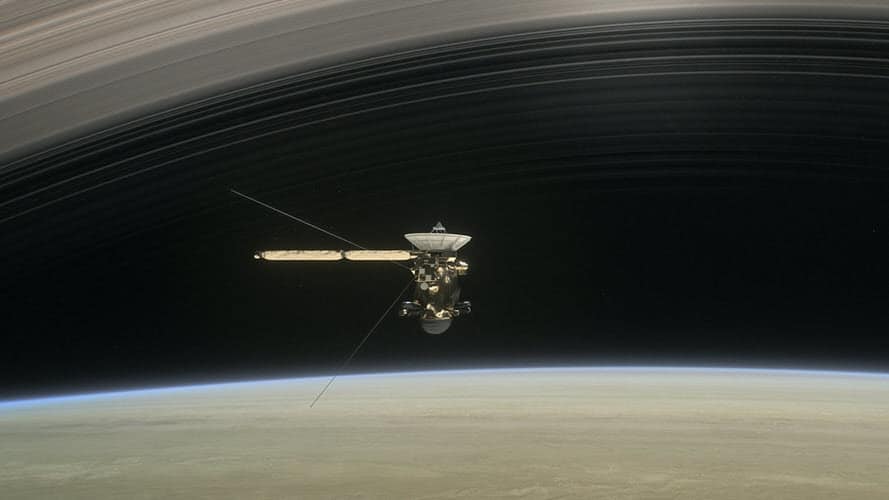Celebrating Cassini Spacecraft Dives Between Saturn and its Rings

Image Courtesy: https://solarsystem.nasa.gov/
The Cassini spacecraft, a NASA mission in collaboration with the European Space Agency (ESA) and the Italian Space Agency (ASI), conducted a series of daring maneuvers known as the “Grand Finale” in 2017, which included diving between Saturn and its rings. This was a historic and remarkable phase of the Cassini mission, providing unprecedented close-up observations of Saturn and its rings, and ultimately leading to the spacecraft’s intentional destruction in Saturn’s atmosphere.
On 26 April 2017, the Cassini spacecraft starts a series of swoops between Saturn and its rings. These cosmic acrobatics are part of Cassini’s dramatic “Grand Finale,” a set of orbits offering Earthlings an unprecedented look at the second-largest planet in our solar system.
The spacecraft began its 2.2 billion–mile journey 20 years ago and has been hanging out with Saturn since 2004. In April 2017, NASA’s Cassini spacecraft began writing the final, thrilling chapter of its remarkable 20-year-long story of exploration: its Grand Finale. Every week, Cassini dived through the approximately 1,200-mile-wide (2,000-kilometer-wide) gap between Saturn and its rings. No other spacecraft had ever explored this unique region.
The Cassini spacecraft was launched in 1997 and arrived at Saturn in 2004. Over the course of its mission, Cassini made numerous groundbreaking discoveries about Saturn, its rings, and its moons. However, as the spacecraft was running low on fuel and to prevent potential contamination of Saturn’s moons, NASA decided to end the mission with a series of risky maneuvers, including the daring dives between Saturn and its rings.
The Cassini spacecraft made 22 dives, often referred to as “ring-grazing orbits,” between Saturn and its innermost ring, known as the D-ring, from late 2016 to September 2017. These dives brought Cassini closer to Saturn than ever before, with the spacecraft passing through a region that had never been explored before. During these dives, Cassini obtained detailed and unprecedented data about Saturn’s atmosphere, magnetic field, and ring system.
One of the highlights of Cassini’s Grand Finale was the first-ever plunge into Saturn’s atmosphere on 15 September 2017. This final maneuver, known as the “Grand Finale plunge,” saw Cassini intentionally enter Saturn’s atmosphere at a high speed, ultimately leading to the spacecraft’s destruction as it burned up like a meteor. This intentional end to the mission was designed to prevent Cassini from potentially contaminating Saturn’s moons, which could harbor conditions suitable for life.
The data collected during Cassini’s Grand Finale has significantly advanced our understanding of Saturn, its rings, and its complex system of moons. Cassini dived into the planet’s atmosphere, sending science data for as long as its small thrusters could keep the spacecraft’s antenna pointed at Earth. Soon after, Cassini burned up and disintegrated like a meteor.
It has provided valuable insights into the planet’s atmosphere, magnetic field, and ring dynamics, and has led to important discoveries about Saturn’s moons, including the potential for habitability on moons such as Enceladus and Titan.
The Cassini mission, including its historic dives between Saturn and its rings during the Grand Finale, has been a remarkable achievement in space exploration, providing a wealth of new knowledge about Saturn and its moons, and pushing the boundaries of human understanding of the outer solar system.
Observer Voice is the one stop site for National, International news, Sports, Editor’s Choice, Art/culture contents, Quotes and much more. We also cover historical contents. Historical contents includes World History, Indian History, and what happened today. The website also covers Entertainment across the India and World.

